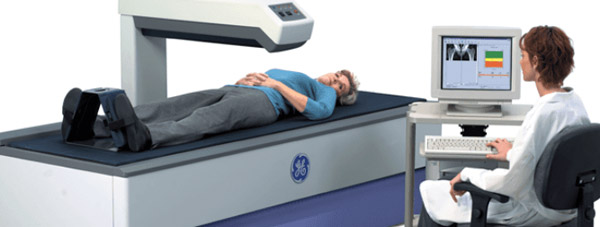
Osteoporosis, a word meaning “porous bone,” is a disease that weakens bones, making them brittle and susceptible to fracture. According to the NIH, an estimated 53 million Americans have osteoporosis or are at risk of developing the disease due to low bone mass. Previous research has found risk factors such as age, gender, ethnicity, and family history contribute to the development of osteoporosis.
“Our study explores the hereditary aspect of osteoporosis by investigating the role our genes play in determining bone mineral density and who is at risk of fracture due to low bone density,” explains senior author Douglas Kiel, M.D., M.P.H., Director of the Musculoskeletal Research Center at IFAR, Hebrew SeniorLife in Boston, Professor of Medicine, Harvard Medical School and Associate Member of the Broad Institute of Harvard and MIT. “Understanding the genomics underlying skeletal fragility (osteoporosis) may lead to preventative interventions that ultimately reduce fractures as we age.”
For the present study, the research team sequenced the entire genome of more than 2,800 people and combined this with exome sequencing as well as another 3,500 people with “deep imputation” of their genotyping results, which is a way to fill in information about the unanalyzed portions of the genome by incorporating the data coming from the 2,800 people with sequencing of their genomes. The results confirmed that some of the genetic variants were associated with bone mineral density by comparing their data with information from more than 20,000 other research participants. The investigators then looked at data from many other studies (totaling more than half-a-million people) and determined that some of these variants also influenced a person’s risk of breaking a bone.
Study results show that a gene involved at the earliest stages of human development, the engrailed homeobox-1 gene, plays a central role in regulating bone density. This is the first time that researchers have connected the gene’s product, the protein EN1, to bone biology in adults. Furthermore, this study validates the use of whole-genome, sequencing-based discovery and deep imputation as sound methods for identifying novel genetic associations. “This study is one of several that have identified relatively rare sequence variants associated with complex phenotypes and disorders, such as osteoporotic fractures and low BMD in general populations, suggesting the value of applying whole genome sequencing in identifying genetic determinants of common disorders,” according to Dr. Yi-Hsiang Hsu, one of the lead authors and a statistical geneticist at Hebrew SeniorLife Institute for Aging Research, Harvard Medical School, Harvard School of Public Health and the Broad Institute of Harvard and MIT.
Dr. Kiel says, “Our findings enhance understanding of the genetics underlying the development of osteoporosis. Ideally, genomic research will one day lead to more personalized interventions (precision medicine) that, in this case, will reduce bone loss and prevent fractures in older adults.”
The study done by Hebrew SeniorLife Institute for Aging Research.